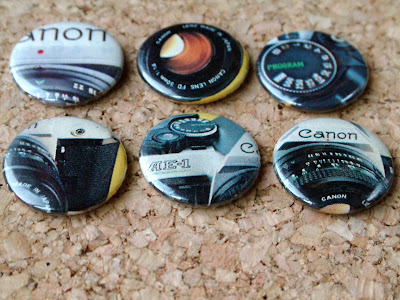One of the cameras Dad used often was a Yashica 44 twin lens camera that used 127 format film. Later it was a Miranda G outfit with three lenses and then Leicaflex, the first SLR ever produced by Leitz. I learned photography using that old Miranda G and I still have it. The Leicaflex I sold years ago (with Dad's permission) to get my first Martin guitar, but I'll save the guitar stories for another day. I started to really get interested in vintage cameras when I began researching that Miranda camera, wondering if I might find more lenses to go with it.
I started browsing camera shows when I lived in Ft. Worth, TX, talking to photographers at the campus print shop where I worked and became thoroughly fascinated. If you knew the features of a particular camera, understood how it worked, and could find the film it used, you could take it out and get beautiful pictures with it, just like when it was new.
Working without a light meter forced you to be more aware of the light and how it played on the subject. When I entered a room where I knew I wanted to shoot some candids of people, I would take a small hand-held light meter from the back pocket of my jeans and take a reading off my hand in the shadowy corners and in the brightest part of the room. Then I knew the effective range of shutter speeds and apertures I could use. I would watch for the changes in lighting and shoot without having to refer to light meter again all evening and was generally pleased with the results. Of course, I could've gotten a new camera with a light meter built in, maybe even with autofocus...but where's the challenge in that?
To honor this heritage of photographers and the great old cameras they used, I've been making buttons with images of classic cameras recycled from photography magazines I've collected. Some are listed for sale in my etsy shop, and I have lots more I haven't gotten around to listing yet. (I've also made some ACEO's with them, but you'll have to see a previous entry for those.) Here are a few of my favorites. (If you don't see your favorite classic camera here, leave me a comment and tell me what you're looking for...chances are, I've got it here somewhere!).....




Love your site! Love what you're doing here! What memories! Remember that you have another vintage camera coming -- the Rollieflex outfit that I bought to assuage my grief when the University Queen of HSU gave me the ring back six days before our scheduled wedding (using the money from the engagement ring I sold). That's the same Rollie that I sold a couple of years later to pay off school debts so I could graduate from seminary. Wimpy Smith, the classmate to whom I sold it, gave it back to me a couple of months ago -- 54 years later. Love, Dad
ReplyDelete